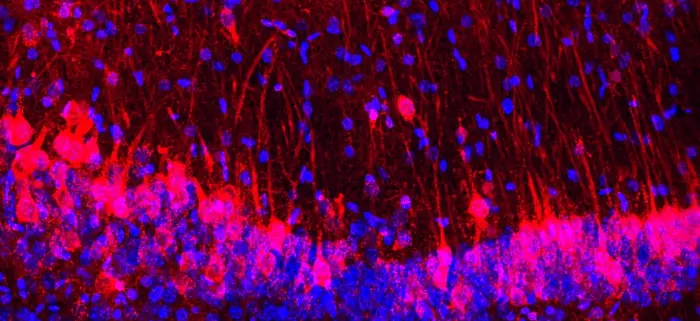Researchers led by Columbia University’s Kristin Baldwin have successfully created mice with hybrid brains, combining mouse and rat neurons, that can sense odors using their rat neurons. This groundbreaking study marks the first time an animal has been able to use the sensory apparatus of another species to accurately sense and respond to the world, highlighting the brain’s flexibility in integrating external brain cells.
Exploring the Potential of Hybrid Brains
One of the biggest challenges in understanding and treating human brain diseases is the limitations of current research methods. While cell cultures and organoids have their advantages, they do not fully demonstrate how cells function at the highest level. Hybrid brains could allow researchers to better understand how brain cells become sick or die and provide insights into the rules of repairing and replacing parts of the brain.
“Right now, researchers are transplanting stem cells and neurons into people with Parkinson’s and epilepsy. But we do not really understand how well that will work,” Baldwin says. “With hybrid brain models, we can start to get some answers and at a faster pace than a clinical trial.”
Rat Neurons Restore Sense of Smell in Mice
The researchers introduced rat stem cells into mouse blastocysts, an early stage of development just hours after fertilization, allowing the rat and mouse cells to grow together and integrate on their own. They then examined where rat neurons appeared in the mouse brain and found that rat cells were present throughout almost the entire mouse brain, following the mouse’s developmental instructions and making the same kinds of connections as their mouse counterparts.
To test if the rat neurons had been integrated into a functional neural circuit, the researchers focused on the olfactory system, which is essential for mice to find food and avoid predators. By engineering the mouse embryo to kill or inactivate its own olfactory neurons, they could determine if rat neurons had restored the animals’ sense of smell.
Surprisingly, the mice with rat neurons were able to find hidden cookies in their cages, demonstrating that the rat neurons had successfully restored their sense of smell. However, mice that retained their own silenced olfactory neurons were less successful at finding the cookies compared to those whose olfactory neurons were engineered to disappear during development.
This hybrid brain system created by Baldwin’s team opens up new avenues for researchers to carefully dissect what happens in different models, which may eventually help improve the success of human cell transplantation and provide a better understanding of brain disorders.
If our reporting has informed or inspired you, please consider making a donation. Every contribution, no matter the size, empowers us to continue delivering accurate, engaging, and trustworthy science and medical news. Independent journalism requires time, effort, and resources—your support ensures we can keep uncovering the stories that matter most to you.
Join us in making knowledge accessible and impactful. Thank you for standing with us!

